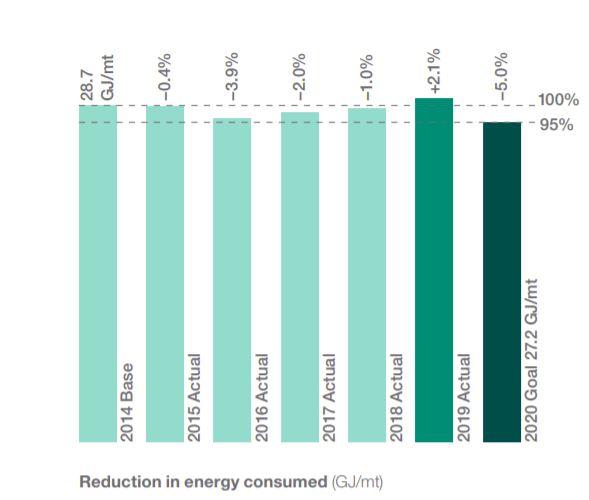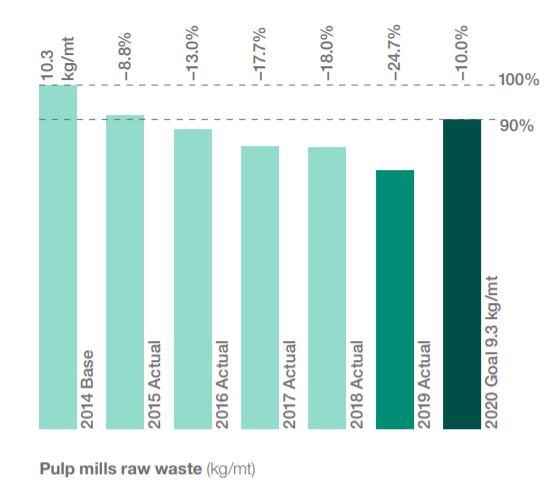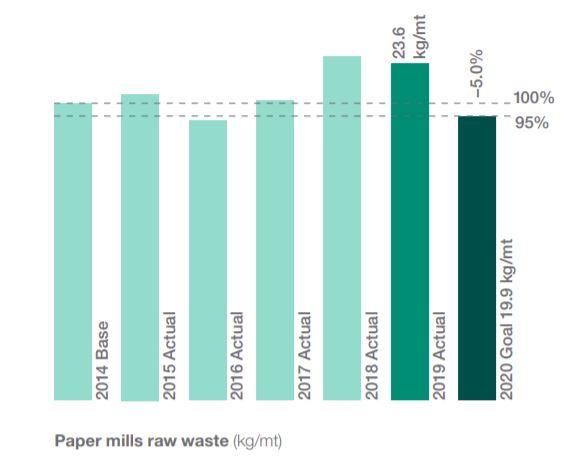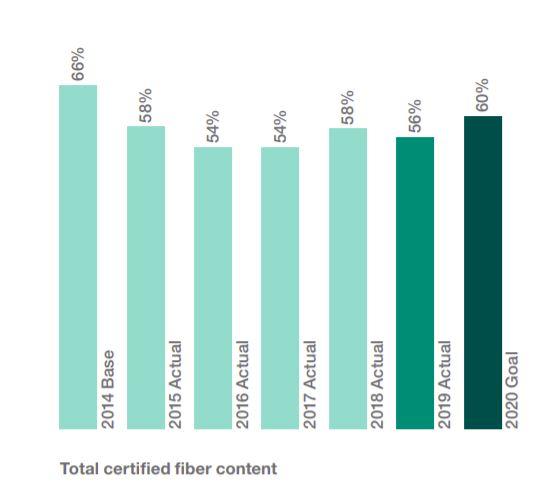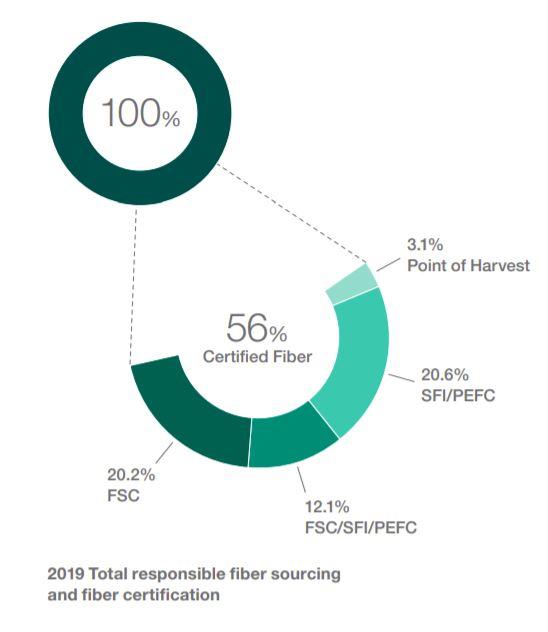Sappi's Pulp and Paper Mills Reduce Waste
Sappi’s pulp and paper mills reduce waste
Lower total energy consumed
Total energy consumed is one of the most important mill metrics we have. It captures the efficiency of our operations in both the numerator (gigajoules of energy used) and the denominator (air-dried metric tons of paper produced). By running our mills more efficiently, energy consumption is lowered. If we ensure that all of the products we produce are saleable, then we avoid the energy waste associated with remaking the products.
It was a difficult year influenced greatly by market conditions. To address the slowing market, we had to curtail operations, which meant equipment was running at less than full capacity and with decreased efficiency. Curtailment also means less paper was produced, resulting in an even greater impact on this intensity metric, as it reduces the denominator. Based on results from recent years, projects have been identified to drive energy efficiency closer to goal performance.
Reduce raw material waste in our pulp and paper mills
The efficient use of raw materials improves front-end cost savings, reduces environmental impact, and lowers costs associated with waste processing. To achieve these benefits, we have separate goals for the pulping and papermaking process areas. For the pulp mills, we targeted a 10% reduction in losses by 2020, whereas for the paper mills, we established a 5% reduction goal by 2020.
With respect to pulp mill losses, we have well surpassed the five-year goal, reaching a 24.6% reduction over the 2014 baseline. In contrast, paper mill losses were 13% higher than the 2014 baseline. While this represents a slight improvement over last year, significant progress will be needed to reach our 2020 goal. Since this year’s results were primarily driven by market curtailment (higher sewer losses, due to machine startups and shutdowns, plus fewer saleable tons), we expect better performance in 2020, as machines settle down with fuller order books.
Achieve 60% certified fiber
Our certification goal tracks the amount of certified wood fiber across our three US manufacturing operations (Matane will be reported next year). All of SNA’s US-based paper and packaging mills are triple certified in accordance with the leading global sustainable forestry chain of custody certification systems, including the Forest Stewardship Council® (FSC®-C014955), the Sustainable Forestry Initiative® (SFI®) program, and the Programme for the Endorsement of Forest Certification™ (PEFC™).
In 2019, 52.8% of the wood, chips, and pulp sourced by our US mills was third-party certified under SFI, FSC, or PEFC standards, with an additional 3% recognized as Point of Harvest certified. Point of Harvest certified fiber refers to wood and chips from lands not otherwise certified by one of the aforementioned forest management standards, yet harvested by logging professionals who are trained in practices designed to conserve forestland, promote biodiversity, and protect soil and water quality. The total, 56%, is only slightly lower than 58% in 2018. Furthermore, 100% of SNA’s wood, chips, and pulp inputs are sourced from well-managed forests and are third-party verified as originating from controlled and noncontroversial sources. Additionally, all of the wood and chips that SNA procures for the Somerset and Cloquet mills meet the requirements of the SFI Fiber Sourcing Standard. This standard provides third-party verified claims and customer assurance of Sappi’s responsible procurement operations that utilize trained loggers and contribute to biodiversity, forest research, adherence to best management practices, and landowner outreach.
Our 2014 base year performance of 66% certified fiber—which was well above target—reflects that year’s high use of purchased, 100% certified kraft pulp for the Cloquet paper machines after the conversion of the pulp mill to produce saleable dissolving wood pulp. Since 2014, we have transitioned back to making more of our own kraft pulp from wood and chip inputs, which on average include a greater proportion of noncertified fiber compared to purchased pulp. This impact is reflected in lower overall annual certified fiber levels.
For more information on our third-party certifications, please visit sappi.com/na-certifications.
Read more from Sappi North America's 2019 Sustainability Report here.

